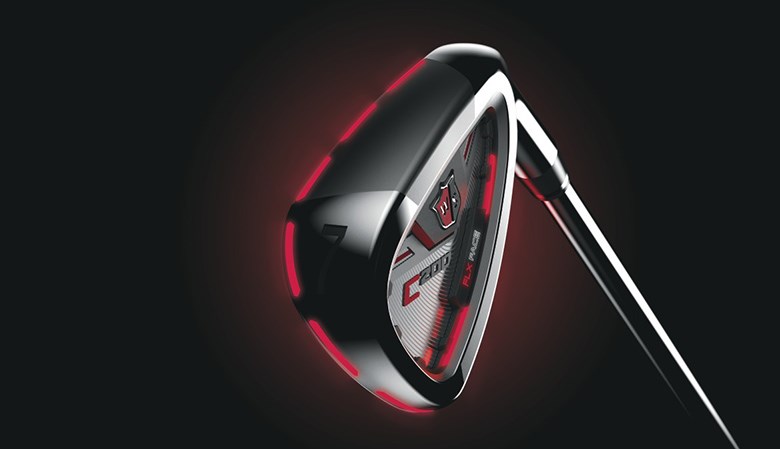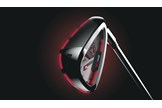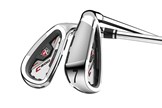Wilson Staff reveal new C200 Iron
Published:
Face flex technology is entrenched in the performance of irons nowadays just as it has been in drivers for years. Manufacturers reckon if they get the iron face flexing like a driver your ball speed and carry distance can be improved.
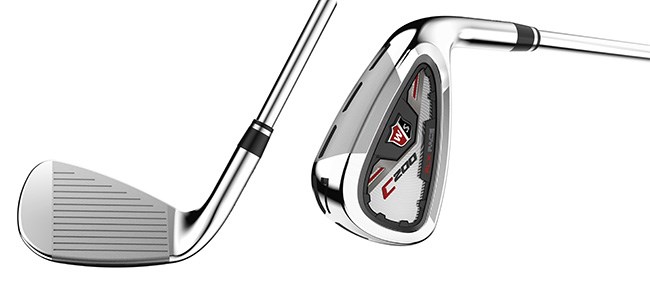
It’s worth remembering face flex in irons is just as limited as drivers. 239 microseconds plus a manufacturing tolerance of 18 microseconds is the legal limit. So manufacturers are trying to max out the CT in the centre of the face but also hot up the areas across the face so you lose less ball speed when shots don’t come out the centre.
Wilson say 76% of the “FLX Face” of their new C200 irons is not in contact with the body of the head. So Wilson’s engineers reckon they’ve taken face flex technology to the max. Where in the past speed channels and pockets have been positioned in the sole or up the face, the C200’s face is literally surrounded by urethane filled “Power Holes” to hot up the whole face. Which sounds to us like very hi-tech stuff.
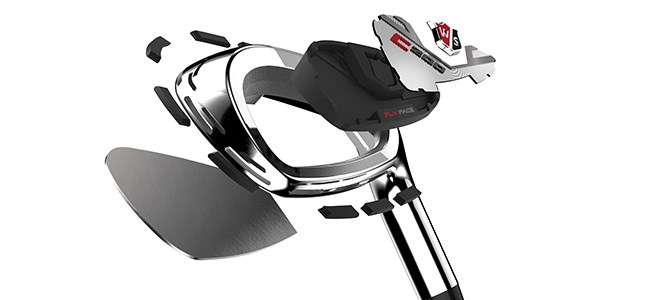
Wilson say the C200’s are engineered for the “Crossover player” who they’ve identified as a mid-high handicapper who’s seeking greater distance and accuracy from a mid sized head. So expect a decent sized cavity back, plenty of forgiveness on off centre hits and a good looking head shape at address.
The C200 will be available in January 2016. 4-PW sets will come as standard with KBS Tour 90 steel shafts for £499 and Aldila Rogue Pro graphite shafts for £599. For further information visit www.wilsonstaff.com.
As the C200’s story is so unique we caught up with Global Director of R&D Michael Vrska to get the full low down on its design.
TG: Is the face of the C200 iron on the maximum 239 microsecond legal limit?
MV: The first FLX Face Technology prototype iron heads we made had CT’s in the 270’s. While they didn’t last long durability-wise, we learned a lot on how to push the previous limits of iron design. The C200 Irons with FLX Face Technology truly push the CT limit of the USGA and R&A, but we worked closely with them to ensure it and all Wilson Staff clubs are conforming. Innovation is key to all we do, but we strive to innovate within the rules and the C200 Irons are right there.
TG: How much extra ball speed does this face give over previous Wilson Staff irons?
MV – We ran an interesting test during the development of the C200 Irons. We had a prototype iron that was very good in terms of ball speed and distance; something we were excited about before we began working on the C200. We took that iron and added FLX Face and Power Holes to it and then got the weight and CG back to our starting point, so there was a true apples to apples comparison. The head with FLX Face Technology had a CT increase of nearly 30 points and the robot and player test results showed a slightly higher launch angle, a ball speed increase of about 1.5 mph and about 5 yards of carry. So we took a really good prototype iron and made it 5 yards longer and that was before we had FLX Face truly optimized like in the final C200 design.
TG: Can you tell us about how ball speed drops off as shots are hit further from the centre? How much ball speed is lost with a 1/2” off centre strike on the toe or heel?
MV: FLX Face Technology goes all the way around the face – not just in the centre of the head – so we’ve seen outstanding off-centre hit performance with both robot and player testing. While distance is clearly the focus of FLX Face and Power Holes, it does allow us to move mass around the perimeter of the head so the C200 Irons are about 8% more forgiving than our previous version. When you combine that improved MOI with the FLX Face literally working on all hits, players are going to be amazed at the distance and great feel they get even when the strike is less than perfect.
TG: Have you had to overcome any issues with the face concaving as it’s so un-supported?
MV: We had some early heads way outside the CT limit which failed durability. As we worked through optimizing the head and FLX Face design, digitally in CAD and FEA and with hittable prototypes, ball speed and ball flight performance were the biggest considerations for our Innovation team, but durability was always a concern as well. To make a long story short, yes, there were some issues early on, but there were resolved fairly quickly and we still have the incredible performance that golfers everywhere are going to love.
TG: How thin is the club face?
MV: It’s very thin. Less than 0.100”
TG: What’s the club face and body made out of?
MV: The head, including the face, is made of 17-4 stainless steel.TG
TG: How many hours of testing have you conducted on the C200? Robot and player testing? How many balls have been hit during testing?
MV: Great question, though I don’t have an exact number. A good guess would be several thousand man hours and definitely over 10,000 robot and player ball impacts invested in the design, development and testing of the C200 Irons. Making a product, any product, that is new, different and truly innovative like the C200 Irons with FLX Face Technology takes significant time, money and dedication and often some blood, sweat and a few tears as well. We are so proud and pleased with the results though. We had so much fun working on this project and seeing the looks on golfers faces when they hit it for the first time.
TG: How long has it taken to create the C200?
MV: We fast tracked the C200 Irons. When we came up with this design concept, we knew had something new, different, better and visible. We dedicated significant additional resources so we could get it in consumers’ hands as quickly as possible, though not before it was ready. From the time we got serious about it to the time it will be in stores is less than 18 months, which is amazing considering the technology that was created and the performance it delivers.
TG: Was there any original inspiration for the C200 face design?
MV: We get inspiration for a lot of different places… cars, watches, nature and animals, boats, planes, clothing, to name just a few but I can’t give all our secrets away.
